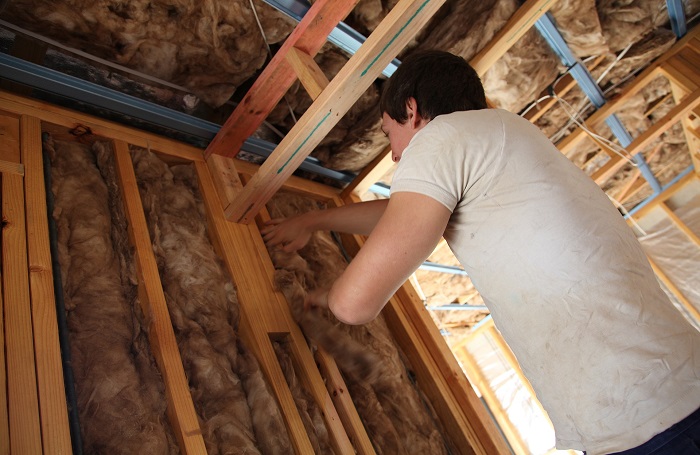
Are you considering blown-in insulation for your home? If so, there are a few things you should know before making your decision.
Blown-in insulation is a great option for insulating your home, as it can help improve energy efficiency and save you money on your monthly energy bills.
In this blog post, we will discuss six things you need to know about blown-in insulation!
#1 Blown-In Insulation is made of cellulose or fiberglass.
Blown-in insulation is made from either cellulose or fiberglass fibers. Cellulose is made from recycled paper products, while fiberglass is made from melted sand.
Blown-in insulation can be made from either material, but most homeowners choose cellulose because it is more environmentally friendly.
Fiberglass blown-in insulation is also available, but it is not as common because it can be more difficult to install. Fiberglass blown-in insulation requires special equipment to install, so it is important to consult with a professional before choosing this option.
Cellulose blown-in insulation does not require special equipment and can be installed by a professional or a DIYer. If you are considering blown-in insulation, we recommend choosing cellulose for its ease of installation and environmental friendliness.
#2 Blown-In Insulation is installed with a machine.
Blown-in insulation is installed with a machine that blows the insulation material into your walls through small holes drilled in the wall. The machine evenly distributes the insulation throughout the wall cavity, providing an effective barrier against heat loss.
Once the blowing process is complete, the holes are filled with putty or caulk to seal them up. Blown-in insulation is an ideal option for homeowners who want to improve their home’s energy efficiency without having to tear down walls or make major changes to their home’s structure.
#3 Blown-In Insulation can be used in any type of home.
Blown-in insulation is a versatile product that can be used in any type of home, including single-family homes, multi-family homes, and even mobile homes.
Blown-in insulation can be installed in walls, ceilings, attics, and crawl spaces. It is important to consult with a professional to determine the best location for blown-in insulation in your home.
Installing blown-in insulation in your attic is a great way to improve your home’s energy efficiency, as it will help keep your attic cooler in the summer and warmer in the winter.
Blown-in insulation is also an effective way to insulate crawl spaces and walls. If you are considering blown-in insulation for your home, be sure to consult with a professional such as iFoam to determine the best location for installation.
#4 Blown-In Insulation can help improve your home’s energy efficiency.
One of the main benefits of blown-in insulation is that it can help improve your home’s energy efficiency. Blown-in insulation provides an effective barrier against heat loss, which can help keep your home cooler in the summer and warmer in the winter.
By improving your home’s energy efficiency, you can save money on your monthly energy bills. Blown-in insulation is an investment that can pay for itself over time!

#5 Blown-In Insulation is a great option for DIYers.
If you are a DIYer, blown-in insulation is a great option for you! Blown-in insulation does not require special equipment to install, so it is an ideal project for those with limited experience. Cellulose blown-in insulation can be installed by following these simple steps:
Drill small holes in the wall to allow the hose from the machine to enter.
Insert the hose into the holes and turn on the machine.
The machine will blow the cellulose insulation into the wall cavity.
Once the desired amount of insulation has been installed, seal up the holes with putty or caulk.
After the process, make sure to clean up any cellulose insulation that may have been blown outside of the wall cavity.
#6 Blown-In Insulation is environmentally friendly.
Another great benefit of blown-in insulation is that it is environmentally friendly. Blown-in insulation is typically made from recycled materials, such as newspapers, denim, and cellulose.
Cellulose insulation is also treated with boric acid, which helps to prevent mold and mildew growth. When you choose blown-in insulation for your home, you can feel good knowing that you are making a green choice!
If you are considering blown-in insulation for your home, we hope this article has been helpful.
Blown-in insulation is a great way to improve your home’s energy efficiency and save money on your monthly energy bills. It is also a safe and environmentally friendly option for your home. Thanks for reading!










